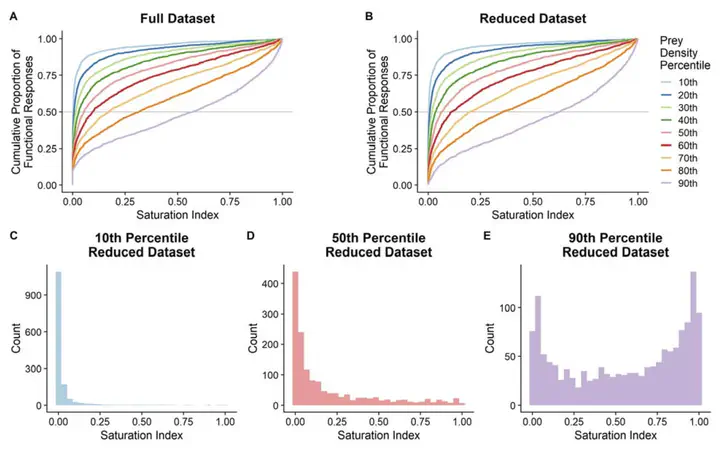Predator feeding rates may often be unsaturated under typical prey densities

Abstract
Predator feeding rates (described by their functional response) must saturate at high prey densities. Although thousands of manipulative functional response experiments show feeding rate saturation at high densities under controlled conditions, it is unclear how saturated feeding rates are at natural prey densities. The general degree of feeding rate saturation has important implications for the processes determining feeding rates and how they respond to changes in prey density. To address this, we linked two databases – one of functional response parameters and one on mass-abundance scaling – through prey mass to calculate a feeding rate saturation index. We find that: 1) feeding rates may commonly be unsaturated and 2) the degree of saturation varies with predator and prey taxonomic identities and body sizes, habitat, interaction dimension, and temperature. These results reshape our conceptualization of predator-prey interactions in nature and suggest new research on the ecological and evolutionary implications of unsaturated feeding rates.